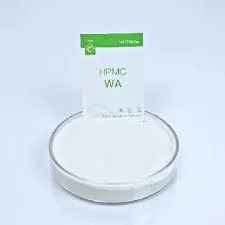
Aza . 19, 2024 11:01 Back to list
Exploring the Different HPMC Grades and Their Applications in Various Industries
Understanding HPMC Grades An Overview
Hydroxypropyl Methylcellulose (HPMC) is a versatile cellulose ether that has gained significant attention in various industries due to its unique properties and functionalities. Its grades are determined by the level of hydroxypropyl and methyl substitution, which ultimately affects its solubility, viscosity, and other physical properties. This article aims to provide an overview of the different HPMC grades, their characteristics, and their applications across various sectors.
Types of HPMC Grades
HPMC can be categorized into various grades, primarily classified based on the viscosity and solubility in cold and hot water. Common grades include low viscosity, medium viscosity, and high viscosity. The viscosity of HPMC is crucial as it influences the thickening, gelling, and film-forming abilities of the product in formulations.
1. Low Viscosity HPMC Typically used in applications where rapid hydration and gel formation are required, low viscosity HPMC grades dissolve quickly in cold water. They are often utilized in the production of light pastes, cement formulations, and personal care products, offering excellent slip properties.
2. Medium Viscosity HPMC This grade is prized for its balanced properties, providing good thickening and stabilizing capabilities. Medium viscosity HPMC is widely used in pharmaceuticals to create suspensions and emulsions, ensuring the uniform distribution of active ingredients. Furthermore, it serves as a suitable binder in the production of tablets and granules.
3. High Viscosity HPMC Known for its thickening and film-forming characteristics, high viscosity HPMC grades are crucial in applications that necessitate high structural integrity. They are commonly used in industries such as construction for enhancing cement and mortar properties, and in the food industry as a stabilizer or emulsifier.
Key Applications of HPMC
hpmc grades

The versatility of HPMC allows it to find application across various sectors, including pharmaceuticals, food, cosmetics, and construction.
1. Pharmaceuticals In the drug formulation industry, HPMC serves multiple roles, including as a binder, coating agent, and controlled-release agent. Its ability to form gels and provide sustained release makes it a preferred choice for tablets and capsules. Additionally, HPMC is used in eye drops and other topical formulations due to its film-forming and moisture-retaining properties.
2. Food Industry HPMC is increasingly mentioned in food applications due to its safety profile and ability to improve texture, stability, and moisture retention. It acts as a thickener in sauces and dressings, helping to achieve the desired viscosity without altering the flavor profile.
3. Cosmetics In cosmetics and personal care products, HPMC contributes to the formulation of lotions, creams, and gels by providing a smooth texture and enhancing stability. Its film-forming properties make it an excellent candidate for hair care products, offering hold and moisture retention.
4. Construction HPMC is vital in the construction industry, enhancing mortar and tile adhesive formulations. Its water retention capabilities ensure that cement mixtures remain workable for extended periods, allowing for better hydration of the cement particles.
Conclusion
HPMC grades offer a broad spectrum of functional properties, catering to diverse industries. Understanding these grades and their specific features is essential for formulating effective products that meet the demands of various applications. As research continues to advance, the potential uses of HPMC are expected to expand, further establishing its role as a critical ingredient in modern formulations. Whether it's in a tablet, a sauce, or a cosmetic cream, HPMC is indeed a remarkable compound with far-reaching implications across multiple fields.
-
Versatile Hpmc Uses in Different Industries
NewsJun.19,2025
-
Redispersible Powder's Role in Enhancing Durability of Construction Products
NewsJun.19,2025
-
Hydroxyethyl Cellulose Applications Driving Green Industrial Processes
NewsJun.19,2025
-
Exploring Different Redispersible Polymer Powder
NewsJun.19,2025
-
Choosing the Right Mortar Bonding Agent
NewsJun.19,2025
-
Applications and Significance of China Hpmc in Modern Industries
NewsJun.19,2025







